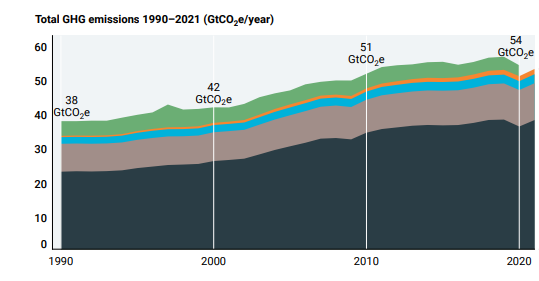According to the latest Emissions Gap Report by the United Nations Environmental Program (UNEP), the world is not on course to meet the Paris Agreement goals. We can, therefore, expect the impact of climate change in the form of unpredictable weather patterns to continue disrupting communities around the world. Unpredictable severe weather is especially bad for the construction industry leading to delays, budget overruns, and property damage.

(Image source: UNEP.org)
A weather risk management plan is, therefore, a must-have tool for contractors in the construction industry to manage the risk of severe weather and its impact on their projects.
What is a Weather Risk Management Plan?
A risk management plan is an essential part of every construction project. It provides an organised approach to recognising, identifying, analysing, controlling, mitigating, and monitoring risk throughout each project's course. Your plan specifically focuses on risks associated with severe weather — such as rain, snow, extreme temperatures or other weather-related factors that could potentially damage site materials or delay progress.
Examples of Weather Risks and Their Impact on Construction
While there are many weather risks, the following three are the most common and have the greatest impact on construction projects.
Rain
Heavy rain can cause significant delays due to its potential to cause mudslides, landslides, and flooding. It can also wash out roads leading up to work sites. In addition, heavy rains can cause a decrease in productivity due to the risk of workers slipping and falling on wet surfaces or having to work in soggy conditions.
Snow
Snow can cause delays in construction projects by preventing access to materials and equipment at the site and making roads leading up to the site impassable. In addition, snow’s insulating properties make it difficult to work with certain materials without exposing them to extreme temperatures.
Temperature
Extreme temperatures — whether hot or cold — can have an adverse effect on construction projects. High temperatures can cause concrete and asphalt materials to dry too quickly, while cold temperatures can prevent proper curing or drying times for these same materials.
Qualitative Elements of a Weather Risk Management Plan
Qualitative risk analysis is descriptive and deals with observable but unmeasurable factors. A risk management plan should include qualitative risk analysis to identify potential weather-related risks, such as the risk of flooding or an unexpected cold snap.
All potential risks should be identified, measured, and assessed against the probable impact on the project. This is a five-step process:
- Identify weather hazards: Consider all the potential weather risks in the area. You can check weather reports, consult the Met Office, and speak with local experts.
- Analyse the weather risks: Next, you will need to evaluate the risk level of each weather risk.
- Evaluate Severity: Consider the probability that each risk will occur and its potential impact on the project. Grade the risks on a 5-point scale, for example:
1=Insignificant
2=Minor
3=Significant
4=Major
5=Catastrophic/Severe
- Evaluate the likelihood of the weather risk: Once again, use a 5-point scale, for example:
1=Rare
2=Unlikely
3=Moderate
4=Likely
5= Almost Certain
- Prioritise weather risks: Finally, compare differing risk levels and formulate internal rules, policies and procedures to mitigate the risks. We suggest you use a risk matrix to do this, as shown in the figure below. Give priority to high-impact, high-probability risks.

(Image source: Safetyculture.com)
Quantitative Elements of a Weather Risk Management Plan
Unlike qualitative elements, quantitative elements are measurable. Quantifying the risk associated with various weather events is important to forecast cost impacts accurately. This can involve calculating statistical probabilities based on past historical data or using risk models developed by experts in the field. It’s also important to identify risk triggers and actions to take when those triggers are reached.
EHAB Weather Risk Management Software
Combining qualitative and quantitative components is the surest path toward obtaining an accurate understanding of possible risks and their influence on achieving project objectives. With such a comprehensive strategy in place, you can rest assured that your project will reach its desired results with success.
EHAB Weather Risk Management Software is the perfect tool for construction companies looking to protect their projects from any potential delays or damage due to severe weather. Our comprehensive solution helps constructors quickly and accurately assess the risks associated with severe weather events, forecast cost impacts, and develop mitigating strategies.
In addition, the Enhanced Planner feature takes the risk management process one step further. It allows users to access granular datasets, machine learning-driven mathematical models, and customer data to plan weeks ahead, helping you create a comprehensive weather risk management strategy.
For more information on how EHAB can help you come up with the best risk management plan for weather, get in touch today.



